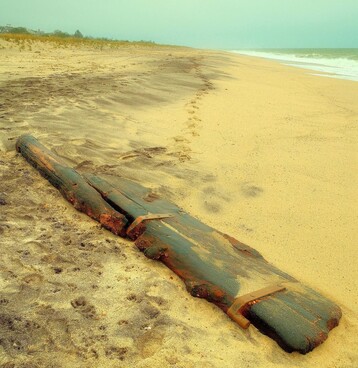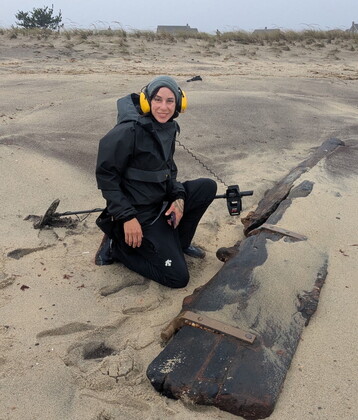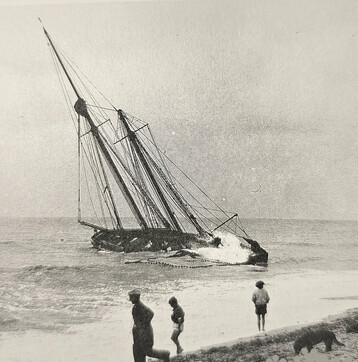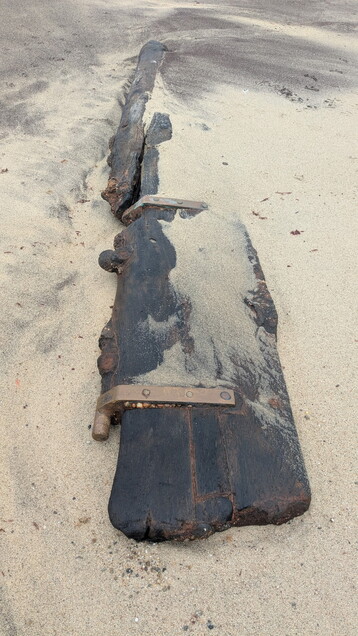Shipwreck Remains Believed To Be From Doomed Fishing Schooner That Wrecked In 1918
Jason Graziadei •

Shipwreck remains discovered in ‘Sconset last month may be from a fishing schooner that wrecked at Low Beach more than 100 years ago in thick fog.
A 500-pound fragment of what is believed to be a stern post and part of a rudder was found by Karen Russell as she was walking Nantucket’s eastern shoreline after a storm in mid-October. Since then, the Egan Maritime Institute has been investigating the shipwreck remains with David Robinson, the director and chief archeologist for the Massachusetts Board of Underwater Archeological Resources (BUAR).
“While it is nearly impossible to link wreck fragments to a specific vessel definitively, early assessments suggest these remains may belong to the fishing schooner Evelyn M. Thompson, which wrecked at Low Beach on July 14, 1918,” said Tony Dumitru, Egan Maritime's museum collections and exhibitions manager in a statement released by the non-profit on Monday.

The 19-person crew of the schooner reached shore safely after the mid-summer wreck, but the vessel was a total loss, according to Arthur Gardner’s book, “Wrecks Around Nantucket.”
The schooner was carrying 30,000 pounds of fresh mackerel, along with 120 barrels of salted mackerel, a “rich haul” worth an estimated $8,000 at the time, according to a report in the Inquirer and Mirror on July 20, 1918.

Nantucket is known as one of the great “graveyards of the Atlantic,” with an estimated 800 shipwrecks around its shoreline, according to Egan Maritime. Today, coastal erosion, shifting sands, and storm activity continue to reveal long-buried maritime remains. Low Beach often exposes fragments after periods of rough weather, offering rare glimpses into Nantucket’s storied seafaring history.
“As a museum, we initially considered recovering the remains,” Dumitru said. “But after learning more about proper conservation and the importance of protecting the surrounding environment, we are following BUAR’s recommended management approach.”
Following Robinson’s guidance, Egan is collaborating with BUAR to monitor and inventory the remains, document them where they are located, and track their condition over time.
The island non-profit is also working with BUAR to adopt a local element of the national S.T.A.M.P. (Shipwreck Tagging and Archaeological Management Program) that BUAR hopes to adopt statewide. The program tags shipwreck fragments with QR codes, allowing the public to scan timbers with their phones and contribute information to a national online database maintained by the Florida Public Archaeology Network and the University of West Florida, on behalf of state and federal agency partners.
“Working with BUAR to develop a local STAMP program on Nantucket would be a perfect fit for Egan Maritime,” said Carlisle Jensen, Egan Maritime's executive director. “It blends our commitment to preserving Nantucket’s maritime history with hands-on educational opportunities for students. Environmental science students, for example, can study the natural movement of sand along the shoreline while tracking shipwreck fragments, connecting history with science in a tangible way.”
